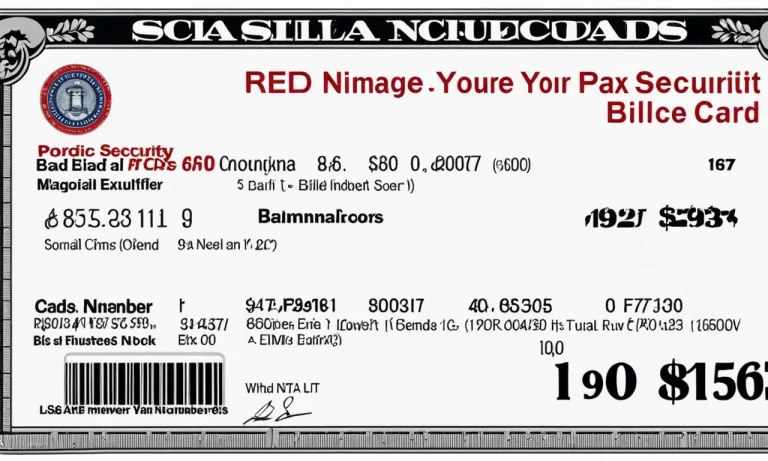How Much Is Sheep Wool Worth? A Detailed Guide To Wool Prices And Value
For centuries, wool from sheep has been a valuable commodity. From clothing to carpets, wool is an incredibly versatile material that has been central to human civilization.
If you have sheep and are wondering what their wool is worth, you’ve come to the right place.
If you’re short on time, here’s a quick answer to your question: The price paid for raw sheep wool varies quite a bit based on the wool’s quality but generally ranges from $10-20 per kilogram for medium grades up to $25 or more per kilogram for very high-quality fine wool.
What Factors Affect the Value of Sheep Wool?
When it comes to determining the value of sheep wool, several factors come into play. These factors can greatly influence the price that wool producers receive for their products.
Understanding these factors is essential for both sheep farmers and buyers in the wool industry.
Breed of Sheep
The breed of sheep plays a significant role in determining the value of wool. Different breeds have varying qualities of wool, such as fiber length, crimp, and strength.
For example, Merino sheep are known for producing fine, soft, and high-quality wool, which is highly valued in the market.
On the other hand, coarse wool breeds like the Lincoln or Romney may have a lower value due to the coarser texture of their wool.
Quality and Fineness
The quality and fineness of sheep wool are crucial factors in determining its value. The finer the wool, the higher its value.
Fineness is determined by the diameter of the individual wool fibers, with lower micron indicating finer wool.
Wool with a lower micron count is often softer, more luxurious, and in high demand for luxury clothing and textiles.
Cleanliness
The cleanliness of the wool also affects its value. Clean wool is free from dirt, debris, and excessive vegetable matter. Wool that requires less processing and cleaning will generally have a higher value.
Ensuring proper sheep management practices, such as regular shearing and keeping sheep in clean environments, can contribute to cleaner wool and, consequently, higher value.
Color
While white wool is traditionally the most sought-after in the market, colored wool has gained popularity in recent years. The value of colored wool depends on the specific market demand for natural or dyed colored wool.
Certain sheep breeds, such as the Shetland or Jacob, produce wool in a variety of colors, providing unique options for textile producers and artisans.
Local Supply and Demand
The local supply and demand for sheep wool also play a role in determining its value. Factors such as the availability of local wool mills, the presence of textile industries, and the demand for wool products in the region can influence the price of wool.
Additionally, global factors like international trade and fluctuations in the market can impact the overall value of sheep wool.
It’s important to note that these factors may vary based on the specific market and industry trends.
Staying informed about current market conditions, industry standards, and the preferences of potential buyers can help sheep farmers and wool buyers make informed decisions regarding the value of sheep wool.
Average Wool Prices by Type
Fine Wool
Fine wool is highly valued for its softness and fineness. It is typically obtained from sheep breeds such as Merino, Rambouillet, and Cashmere. Due to its premium quality, fine wool commands higher prices in the market.
According to recent data from the Australian Wool Exchange, the average price for fine wool was around $15 per kilogram in the past year.
However, prices can vary depending on factors such as the quality, length, and color of the wool.
Medium Wool
Medium wool is obtained from breeds like Corriedale, Romney, and Columbia. It is known for its versatility and durability, making it suitable for a wide range of applications.
The average price for medium wool was approximately $12 per kilogram, according to the same data from the Australian Wool Exchange.
This type of wool is often used in the production of clothing, blankets, and carpets due to its balance between softness and strength.
Coarse Wool
Coarse wool comes from sheep breeds such as Lincoln, Cotswold, and Leicester Longwool. It is thicker and less fine compared to fine and medium wool.
Coarse wool is commonly used in the production of rugs, upholstery, and insulation materials.
The average price for coarse wool was around $10 per kilogram based on the data from the Australian Wool Exchange.
However, it’s important to note that prices may vary depending on factors such as fiber length, strength, and color.
Organic Wool
Organic wool is becoming increasingly popular among consumers who prioritize sustainability and environmental consciousness.
It is obtained from sheep that are raised without the use of synthetic fertilizers, pesticides, or hormones. The average price for organic wool tends to be higher compared to conventional wool due to the additional costs involved in organic farming practices.
However, it is worth noting that specific price data for organic wool may vary depending on the region and specific certification standards.
How to Calculate Your Wool’s Value
Get Sample Tested
Before calculating the value of your wool, it is essential to determine its quality. This can be done by getting a sample of your wool tested.
There are various testing facilities available that can analyze the fiber diameter, staple length, and other important characteristics of your wool.
By understanding the quality of your wool, you can have a better idea of its potential value in the market.
Consider Processing Costs
When calculating the value of your wool, it is important to take into account the processing costs. Processing costs include expenses such as shearing, skirting, cleaning, carding, and spinning.
These costs can vary depending on the size of your flock and the type of processing you choose. It is advisable to contact local processing mills or fiber co-ops to get an estimate of the processing costs involved.
Factor in Additional Expenses
In addition to processing costs, there may be additional expenses that need to be factored in when calculating the value of your wool.
These expenses can include transportation costs to the processing facility, packaging materials, and marketing expenses if you plan to sell your wool directly.
It is important to keep track of all these expenses to get an accurate estimate of the overall value of your wool.
Compare to Local Market Rates
Once you have determined the quality of your wool and considered the processing and additional expenses, it is time to compare your wool’s value to the local market rates.
This can be done by researching the current prices of wool in your area. Check with local wool buyers, wool auctions, or online platforms that specialize in buying and selling wool.
By comparing your wool’s quality and processing costs to the market rates, you can assess the potential value of your wool and make informed decisions.
Remember, wool prices can fluctuate, so it is important to stay updated on the market trends and adjust your calculations accordingly.
By following these steps and considering all the relevant factors, you can get a better understanding of how much your sheep wool is worth.
How to Sell Your Wool for Top Dollar
When it comes to selling your wool, you want to ensure you get the best price possible. Here are some key steps to follow in order to maximize the value of your wool:
Clean and Class Your Wool
Before selling your wool, it is important to clean and class it properly. This involves removing any dirt, debris, or vegetable matter from the fleece.
Additionally, you should separate the wool into different grades based on its quality. This process not only improves the overall value of the wool but also makes it more attractive to potential buyers.
By investing time and effort into cleaning and classing your wool, you can present a high-quality product that demands a higher price in the market. Remember, buyers are willing to pay more for well-maintained and graded wool.
Find Interested Buyers
Once your wool is ready to be sold, the next step is to find interested buyers. Start by reaching out to local wool mills, textile manufacturers, and crafters who may be interested in purchasing your wool.
You can also explore online platforms and forums dedicated to connecting wool producers with buyers.
Networking is key in the wool industry, so attend trade shows and events where you can meet potential buyers face-to-face.
Additionally, consider joining industry associations or cooperative groups to gain access to a wider network of buyers.
Negotiate for the Best Price
When it comes to negotiating the price of your wool, it is important to do your research and be prepared.
Look up current market prices for wool in your area and consider factors such as the quality of your wool, demand, and supply dynamics, and any unique features or qualities that set your wool apart.
During negotiations, be confident and assertive but also willing to compromise. Remember that building a good relationship with buyers can lead to repeat business and long-term partnerships.
Explore Value-Added Products
To further increase the value of your wool, consider exploring value-added products. These can include processed wool products such as yarn, roving, felt, or even finished textile items like blankets or scarves.
By adding value to your wool through processing and creating end products, you can command a higher price and tap into niche markets where there is a demand for unique and handmade wool products.
Future Outlook for Wool Prices
As the global economy continues to evolve and consumer preferences shift, the future outlook for wool prices is subject to various factors.
Here are a few key factors that may influence the value of sheep wool in the coming years:
1. Demand from the Fashion Industry
The fashion industry plays a significant role in driving the demand for wool. As fashion trends change and consumers become more conscious of sustainable and natural fibers, the demand for high-quality wool products may increase.
Brands that prioritize ethical and sustainable practices are likely to drive the demand for wool, which could positively impact wool prices.
According to Wool.com, the global wool market has seen a steady increase in demand over the past few years, with emerging markets like China and India showing significant growth potential. This suggests that the future demand for wool remains promising.
2. Supply and Production Challenges
The supply and production of wool can also impact its future prices. Factors such as droughts, disease outbreaks, and fluctuations in the sheep population can affect the overall supply of wool. Additionally, changes in land availability and farming practices may also impact wool production.
It’s important to note that wool production is also influenced by the profitability of other agricultural activities. If farmers find alternative ventures more lucrative, they may reduce their focus on sheep farming, which could eventually impact the supply of wool.
3. Competition from Synthetic Fibers
Synthetic fibers, such as polyester and nylon, have gained popularity due to their affordability and ease of production.
These fibers often serve as substitutes for wool in various industries, including fashion and home textiles.
The competition from synthetic fibers can put downward pressure on wool prices.
However, it’s worth mentioning that wool has unique qualities that synthetic fibers cannot replicate. Wool is renowned for its warmth, breathability, and natural resilience, making it a preferred choice for certain applications.
Therefore, it is likely that there will always be a demand for wool despite the competition from synthetic alternatives.
4. Global Economic Factors
Global economic conditions can significantly impact wool prices. Factors such as currency exchange rates, trade policies, and overall economic stability can influence the demand and pricing of wool on a global scale.
For instance, a strong demand for luxury products in countries with a stable economy can drive up the prices of premium wool. On the other hand, economic downturns or trade disputes may lead to a decrease in demand and subsequently affect wool prices.
It’s important for wool producers, manufacturers, and consumers to stay updated on these economic factors and adjust their strategies accordingly to navigate potential price fluctuations.
Conclusion
Sheep wool remains a valuable product in today’s textile industry.
While prices fluctuate based on quality, supply, and demand, most sheep farmers can expect to receive $10-15 per kilogram for their wool.
By properly classing, cleaning, and marketing your wool, you can maximize the price you receive. With wool remaining in high demand for clothing and other goods, the future continues to look bright for sheep producers able to supply quality fleeces.











